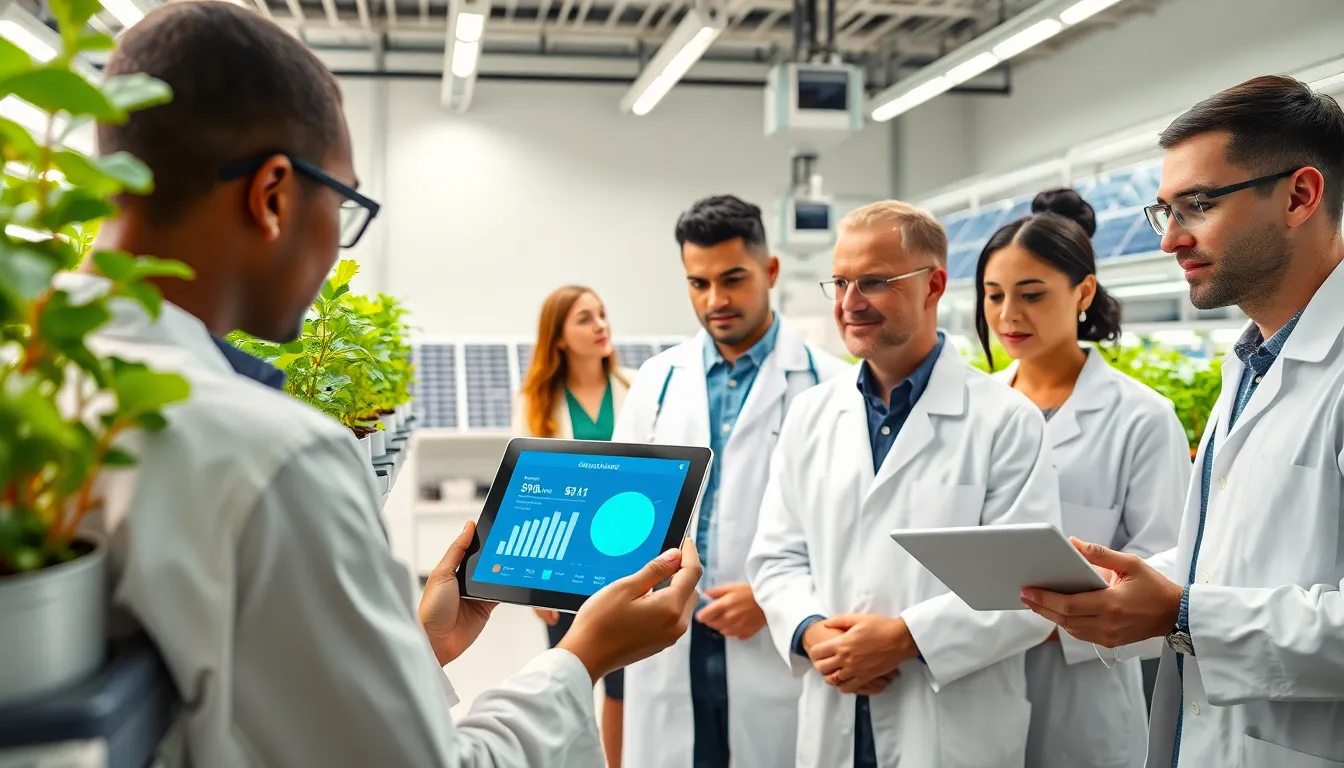Table of Contents
ToggleIn a world where our love for food often comes with a side of guilt, sustainable food technology emerges like a superhero in a cape made of kale, ready to save the day (and the planet). Imagine biting into a juicy burger made from lab-grown meat or savoring crops grown in a compact, vertical farm in the middle of the city. Sounds futuristic, right? Well, it’s here, and it’s reshaping how we produce, consume, and even think about our food. Let’s jump into the green revolution happening right on our plates.
Understanding Sustainable Food Technology

Sustainable food technology refers to innovative methods that address the challenges of food production while reducing environmental impacts. It encompasses various practices and technologies aimed at minimizing resource use, including water, land, and energy. The focus is not merely on the food itself, but also on the entire production and supply chain process. In essence, it’s about creating a system that supports health, equality, and longevity for both people and the planet.
With growing populations and increasing demand for food, understanding sustainable food technology has never been more critical. This approach promotes a holistic view of agriculture, emphasizing efficiency and conservation. To put it simply, sustainable food technology seeks to feed the world without starving its resources.
The Role of Innovation in Sustainable Food Production
Innovation plays a fundamental role in sustainable food production. From precision agriculture that leverages satellite data to smart farming tools that automate irrigation, the possibilities seem endless. For instance, sensors can now monitor soil health in real-time, making precise recommendations for water and fertilizer usage. This not only boosts crop yields but also conserves valuable resources.
Also, biotechnology is driving innovation further. Genetically modified organisms (GMOs) can be crafted to resist pests and adapt to changing climates. While the topic remains controversial, the potential benefits are hard to ignore. By utilizing these technologies responsibly, farmers can increase food production while utilizing fewer chemicals and resources.
Key Technologies in Sustainable Food Systems
Several key technologies are transforming food systems into more sustainable operations:
Vertical Farming
Urban centers are striving to reduce their carbon footprints, and vertical farms help by growing food in stacked layers. This method significantly reduces land use and can even be implemented in abandoned buildings.
Aquaponics
Combining aquaculture (raising fish) with hydroponics (growing plants without soil), aquaponics creates a symbiotic environment where fish waste provides nutrients for plants, while plants help purify the water for fish. This system maximizes resource use and offers fresh produce and fish in one compact setup.
Lab-Grown Meat
As an alternative to traditional livestock farming, lab-grown meat not only cuts down on land and water usage but also reduces greenhouse gas emissions. Cultivated meat products are already starting to appear on restaurant menus, setting the stage for a change in consumer habits.
Blockchain Technology
In the quest for transparency, blockchain can trace food from farm to fork. This tech helps ensure food safety and quality, giving consumers peace of mind about what they eat.
Benefits of Sustainable Food Technology
The benefits of sustainable food technology are manifold:
- Environmental Protection: By reducing waste and conserving resources, sustainable practices can significantly lower the ecological footprint of food production.
- Economic Advantage: Farmers who adopt sustainable technologies often see lower input costs and enhanced profitability through higher yields and reduced waste.
- Health Benefits: Sustainable food systems can lead to healthier food choices, resulting in better nutrition and health outcomes for consumers.
- Social Equity: With an emphasis on local production, sustainable food technology can foster community resilience and equity in food access.
Challenges and Barriers to Adoption
While the promise of sustainable food technology is bright, several challenges persist:
- High Initial Costs: Implementing new technologies can require significant upfront investment, posing a barrier for small-scale farmers.
- Regulatory Hurdles: Navigating the regulatory landscape can be cumbersome, particularly for innovations like lab-grown meat or genetically modified crops.
- Consumer Acceptance: While interest in sustainability is growing, the acceptance of genetically modified foods, lab-grown options, and new farming methods is still a point of contention for many consumers.
- Knowledge Gaps: Not all producers have access to the knowledge or training needed to effectively carry out sustainable practices.
The Future of Sustainable Food Technology
Looking ahead, sustainable food technology stands at the precipice of revolutionizing the food industry. As technology advances, innovations will likely lead to even more efficient systems that reduce waste and enhance food security.
Also, with increasing awareness of climate change and its effects, consumers are shifting their purchasing habits towards more sustainable options. The demand for transparency in sourcing and sustainability credentials is forcing companies to adapt. We can expect to see a surge of startups focused on sustainable alternatives and larger corporations investing heavily in green technology.
Governments and organizations worldwide are also recognizing the importance of supporting sustainable practices through policy changes and subsidies, which will further encourage adoption. The focus will be to create not just a sustainable food system, but one that is resilient in the face of global challenges.






